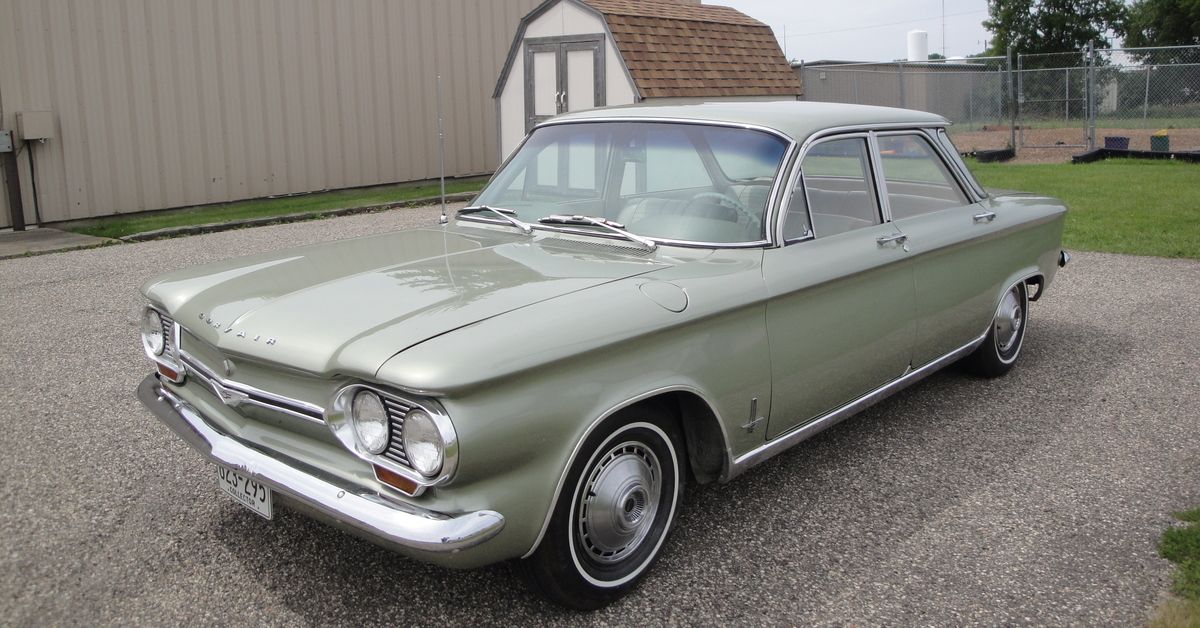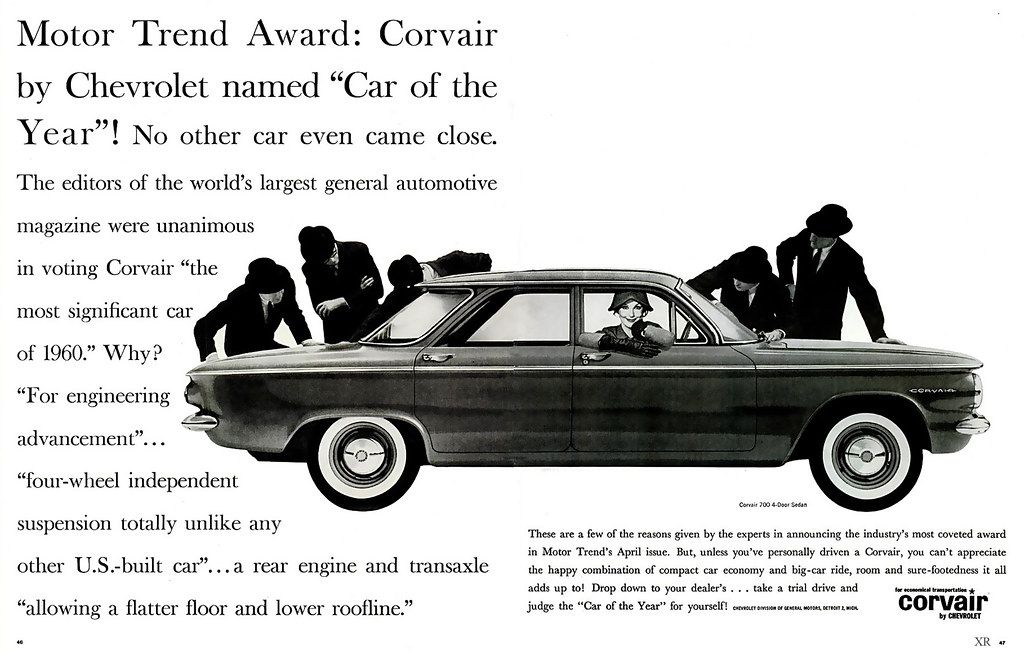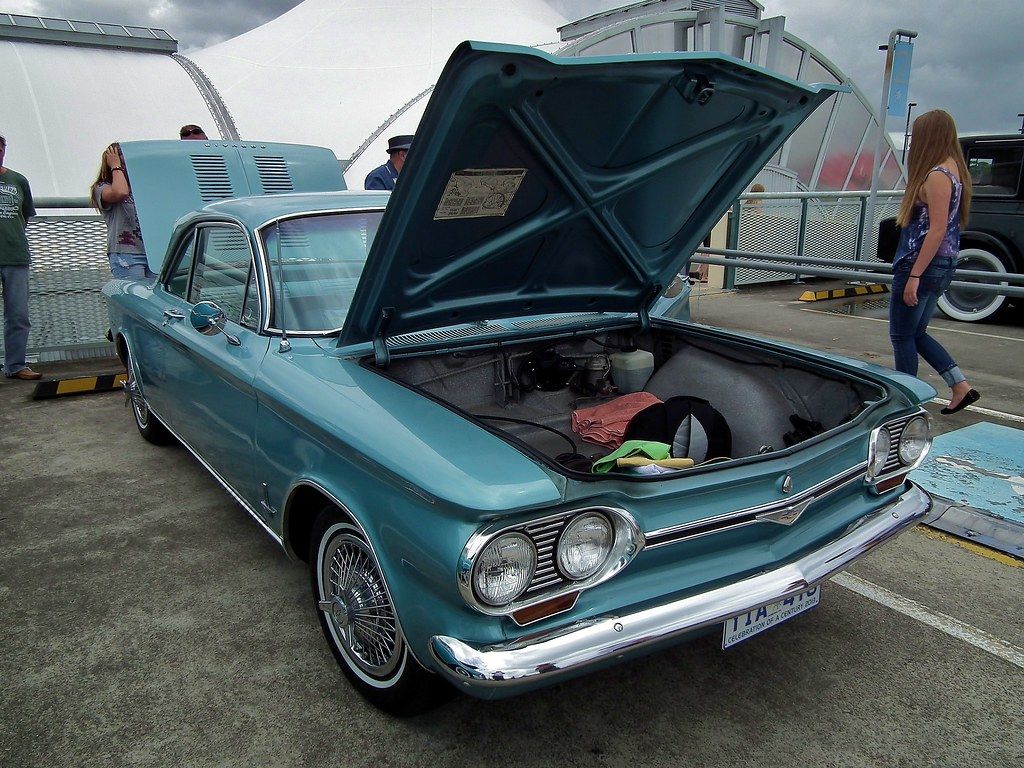When the US automotive market had become fairly standardized and predictable, the Chevrolet Corvair arrived to shake American drivers out of their conformist slumber with a radical design, unlike anything the Big Three have produced before or since. While the sporty, economical little car had its share of enemies, most notably Ralph Nader, it sold in the millions and has become a valuable collector car today.
Throughout the '50s, American cars had become increasingly luxurious and just plain old large. Cars with wide bodies and showy fins like the Buick Invicta were typical of the times, a reflection of the United States' booming post-war economy. At the dawn of the '60s, though, automakers were recognizing that there was a gap in the market that could be filled by compact, affordable vehicles.
Following on the success of small foreign cars like the Sunbeam Alpine and oddball domestic compacts like the Ramblers sold by AMC, the Big Three began to roll out similar models. For the most part, though, these were just scaled-down versions of their existing offerings powered by typical American engines.
While Ford and Chrysler played it safe with their forays into the compact market, Chevrolet took an entirely different approach and created a classic.
The New Chevrolet Was Revolutionary
Almost nothing about the Corvair was to be expected from an American automaker. The most obvious difference between other models from Chevrolet's competitors and even from other models in the Chevy lineup was the use of a rear-mounted, air-cooled engine.
The design had, of course, been seen on several small European cars, probably most famously on the Volkswagen Beetle and Porsche 911 but also found on other cars. It was unheard of on American automobiles, though. And it continues to be; no mass-produced American designed car since has used the rear engine air-cooled layout.
This novelty of the Corvair wasn't done just for the sake of quirkiness, though. It allowed for real practical advantages, which Chevrolet made sure to market to potential buyers looking for a sensible but fun car on a budget.
Without the need for a transmission tunnel running through the cockpit of the car from a front-mounted engine to the drive wheels in the rear, the Corvair's floor was made flat for more comfort and space inside for drivers and passengers. And by keeping a roughly conventional body shape with a hood extending far forward, trunk space was made much greater than on other compact cars.
The rear-engine layout also had performance benefits. With the extra weight of the engine directly above the tires driving the car, rear traction was significantly increased. In addition to the new engine design, the Corvair was innovative in its use of four-wheel independent suspension.
As a result of these and other feats of engineering, the Corvair was awarded the title of Car of the Year in 1960 by Motor Trend. It seemed that the new car might change the very landscape of American motoring.
The Corvair Controversy
Unfortunately, the Corvair was limited in its influence. The new design proved controversial, although not among motorists. Instead, it was the target of criticisms by competitors, who downplayed its advantages and exaggerated its risks, and most importantly by consumer protection advocate Ralph Nader.
In his book, Unsafe At Any Speed, Nader argued that the automotive designs of the day were inherently dangerous and that government regulation was needed to prevent automakers from churning out rolling deathtraps.
Alongside claims that front bumpers could trap pedestrians and force them under a car's wheels in the event of a collision and that the use of chrome trim was causing drivers to be blinded by sunlight reflecting off oncoming vehicles, Nader singled out the Corvair as an especially deadly car.
In a chapter calling it "The One-Car Accident," the model was derided as unstable due to its innovative independent suspension design. Nader accused the car of being unacceptably prone to oversteer and rolling over. His book was quite successful among the public and influential among politicians.
While the politicians reacted by creating the Department of Transportation in the US and passing laws to regulate the auto industry, the public reacted by turning its back on the Corvair. Sales fell by 50% in just one year.
What A Classic Corvair Costs Today
While safety-conscious readers of the '60s had no interest in the Corvair, the modern automotive enthusiast recognizes it for what it is: a great small car of the era and a historically significant work of engineering. Perhaps thanks to multiple independent studies on the Corvair's safety by universities and government entities, demand for the Chevrolet today is fairly high.
While some of the more unusual and interesting body styles of Corvair (the model was made in a variety of styles from sedan to van to pickup truck) can fetch prices over $50,000, the classic coupe and convertible models like this 1964 are likely to cost you around $20,000 in excellent condition.



